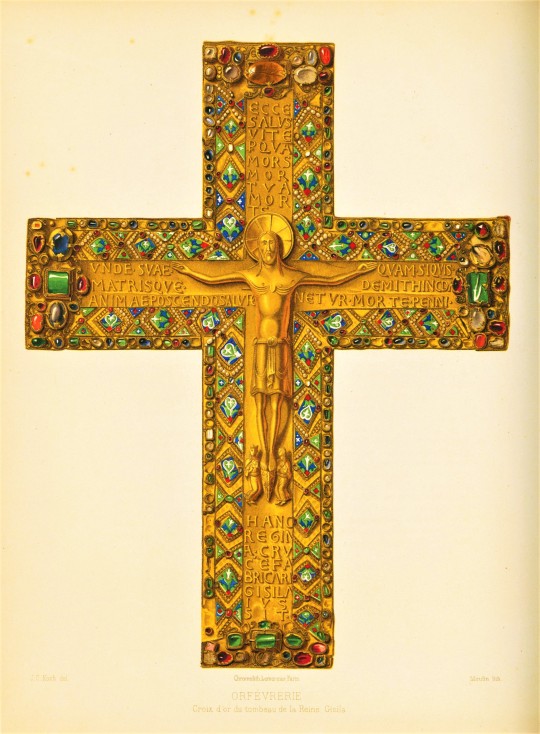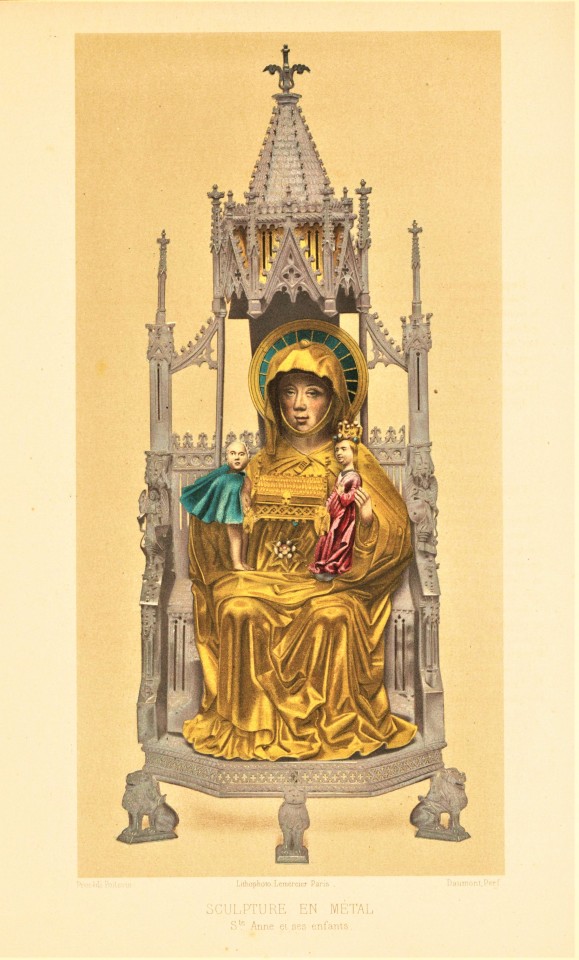#Handbook of the Arts of the Middle Ages and Renaissance as Applied to the Decoration of Furniture Arms Jewels Etc.
Photo










Decorative Sunday
In 1823, an aspring young lawyer named Jules Labarte (1797-1880) married Joséphine Debruge-Duménil*, the only daughter of the wealthy art collector Louis-Fidel Debruge-Duménil (1788-1838). He was enthralled by his father-in-laws collection, one of the first major private collections of Medieval and Renaissance Art in France, and by 1835 he had abandoned the law to dedicate himself to the study of art history. A few years later, Debruge-Duménil passed away unexpectedly, and Labarte was charged with identifying and cataloging his collection of over fifteen thousand artifacts, a task he took on with great meticulousness.
The resulting catalog was published in 1847 by La Librarie Archeonologique de Victor Didron with a 400 page introduction. This well-researched introduction became a highly sought after text, and Didron pressed Labarte for years to produce a second edition. Labarte refused for years, but allowed for a English translation, published in 1855 by J. Murray of London as Handbook of the Arts of the Middle Ages and Renaissance as Applied to the Decoration of Furniture, Arms, Jewels, Etc.
The English edition only increased the appetite for a revised French edition, to which Labarte finally agreed. Between 1864 and 1866, Histoire des arts industriels au Moyen Âge et à l'époque de la Renaissance was published in Paris by A. Morel et Cie. in four volumes, with two additional volumes of plates. Printing was done by Henri Plon, an ancestor of 16th century Danish typographer Jehan Plon. The plates are primarily chromolithographs produced by Lemercier, the largest lithography firm in Paris at the time. Keep your eyes peeled for a follow up post where we will share images from the second album and discuss Rose-Joseph Lemercier (1803-1887).
The above images are all sourced from the first album of plates. Critics praised the book’s illustration for its rich colors and “photo-like accuracy.” You might look at the last image above (of the statue St. Anne and her Children by German artist Hans Greiff) and question that characterization based on the somewhat bizarre faces, but lo and behold, the faces on the actual statue are a bit strange! See for yourself:

Find more posts on publisher August Morel here.
Peruse more Decorative Sunday posts here.
-Olivia, Special Collections Graduate Intern
*Special shout out to Institute National d’Histoire de l’Art (INHA) for providing me with the first name of Labarte’s wife Josephine, who is most commonly (and annoyingly) referred to in the literature as “daughter of Louis-Fidel Debruge-Duménil” or “wife of Labarte.”
#Decorative Sunday#Histoire des Arts Industriel#decorative arts#decorative plates#Jules Labarte#La Librarie Archeonologique de Victor Didron#Histoire des Arts Industriels au Moyen Âge et à l'Époque de la Renaissance#A. Morel et Cie.#A. Morel#Lemercier#chromolithographs#chromolithography#Yay chromoliths!#Louis-Fidel Debruge-Duménil#Joséphine Debruge-Duménil#Handbook of the Arts of the Middle Ages and Renaissance as Applied to the Decoration of Furniture Arms Jewels Etc.#Handbook of the Arts of the Middle Ages and Renaissance#John Murray#J. Murray#Henri Plon#Jehan Plan#olivia
67 notes
·
View notes